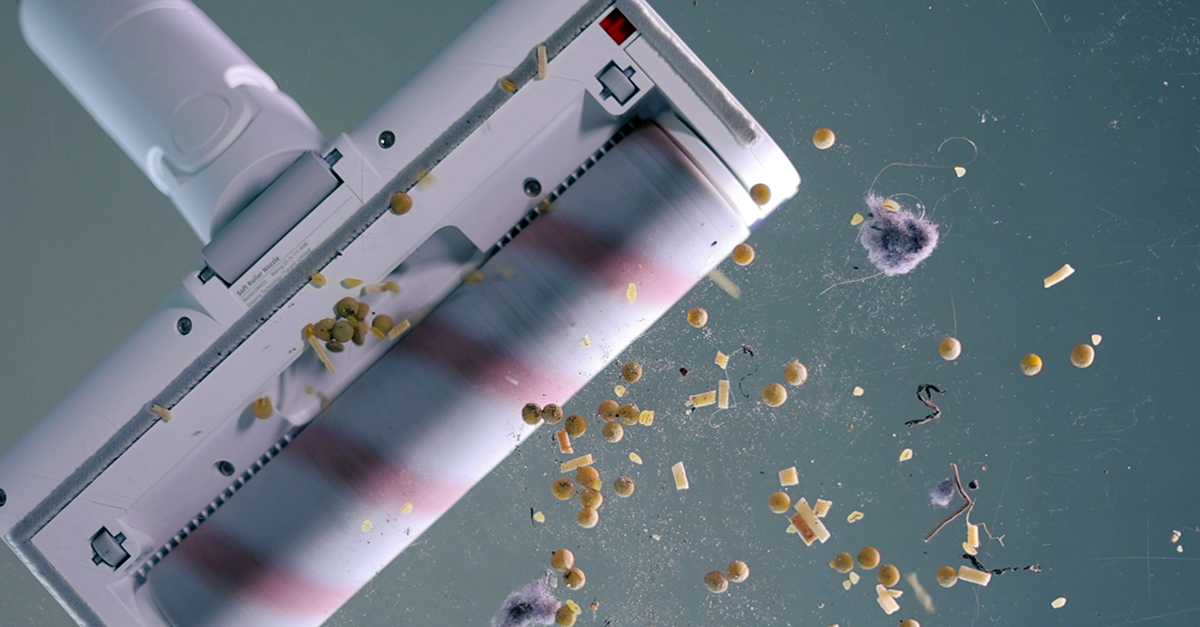While dust may make you look bad when a “white glove test” flags poor cleaning, awareness of its presence can prompt positive changes. Adopting a science-based dust management program will help improve customer perception of your cleaning business or facility, advance building inhabitant health, and give your organization a competitive advantage.
Dust control measures
The first step in adopting a dust management program is installing entry matting to reduce the amount of debris tracked into the facility. Effective mats may capture 85% of soils within the first
10–15 feet of walk-off length, lowering the cost of soil removal and asset repair and replacement.
Other dust management strategies include:
- Dusting with a damp microfiber cloth to reduce stirring and resettling dust, rather than with a feather or puff duster.
- Practicing “facial distancing” by emptying or changing vacuum filters away from heavily populated facility areas.
- Eliminating sources of clutter, thereby reducing cleanable surface area and dust catchers.
- Switching to vacuums with improved filter systems to reduce airborne and settling dust.
Surface dust assessments
Knowledge of surface dust levels helps to reveal airborne contamination and health impacts. The approximately 40 pounds of airborne dust that settles in a typical indoor space yearly contains
skin cells, hair, insect droppings, bacteria, viruses, mold, microplastics, endocrine disruptors, nanoparticles, pollen, textile fibers, pesticides, cleaning chemicals, paper dust, and more.
Thankfully, assessing levels of airborne and settling dust is relatively simple. Consider purchasing a desktop dust meter or particle counter that continuously measures and graphs dust levels of 2.5- and 0.5-micron-sized particles. However, even an LED flashlight can detect dust when the beam is angled to show particles on a surface.
Once you identify dusty surfaces, place then remove a strip of clear cellophane tape on a 2-inch surface. Try to find the cleanest and the dustiest surfaces to give an overall perspective on settled dust conditions. Then, view the captured dust under a jeweler’s loupe magnifier. Counting and averaging the particles by sampling several representative areas is a practical method for periodic dust assessment.
You can also use a small inspection mirror to locate dust buildup on high sills and dust clumps in areas with little air movement.
For a scientific assessment of allergens, send a dust sample to a lab specializing in this field. It’s fairly inexpensive as a one-time expense and provides valuable information about the presence of specific pollens or molds.
Dusting for preventative medicine
Numerous studies have revealed that dust contains unhealthy matter. A 2024 study published in the journal Environmental Geochemistry and Health found that nanoparticles of urban dust pose a potential threat to human health and urban ecosystems and were carriers of heavy metals, including copper, mercury, zinc, molybdenum, antimony,
and lead. A 2022 study published in Science of The Total Environment found microplastics such as polyethylene and polycarbonate are present in indoor dust with the greatest concentrations in residential apartments, followed by offices, business hotels, university dormitories, and classrooms. A 2008 study, also published in Science of The Total Environment, found that exposure to endocrine-disrupting chemicals was 1,000 times greater indoors than outdoors.
While exposure to individual chemicals such as those found in dust may be within stated safety thresholds, in mixtures they can be toxic and harmful in ways that cannot be easily studied or measured and in a way that exceeds the sum of individual toxicities, according to the 2011 book, “Human Toxicology of Chemical Mixtures” by Harold Zeliger.
Lastly, a 2020 University of California, Davis, study found that influenza viruses can spread through the air on dust, fibers, and other microscopic particles. Researcher William Ristenpart of UC Davis, concluded, “Transmission via dust opens up whole new areas of investigation and has profound implications for how we interpret laboratory experiments as well as epidemiological investigations of outbreaks.”
Business advantages of dust removal
Less dust means less labor, better overall health conditions, and greater productivity. A study by William Fisk of the Lawrence Berkeley National Laboratory and Arthur Rosenfeld, who was a
University of California, Berkeley, physicist and California energy commissioner, noted that improving indoor environments would save U.S. businesses US$6 billion to $19 billion from
reduced respiratory disease, $1 billion to $4 billion from reduced allergies and asthma, $10 billion to $20 billion from reduced sick building syndrome symptoms, and $12 billion to $125
billion from direct improvements in worker performance. They concluded that improved indoor air quality (IAQ) would bring a return on investment of 18 to 47 times the money spent to
improve the indoor environment.
Building inhabitants who are fully present through better IAQ will be more productive. Controlling small particles provides a competitive edge that drives enormous benefits.





